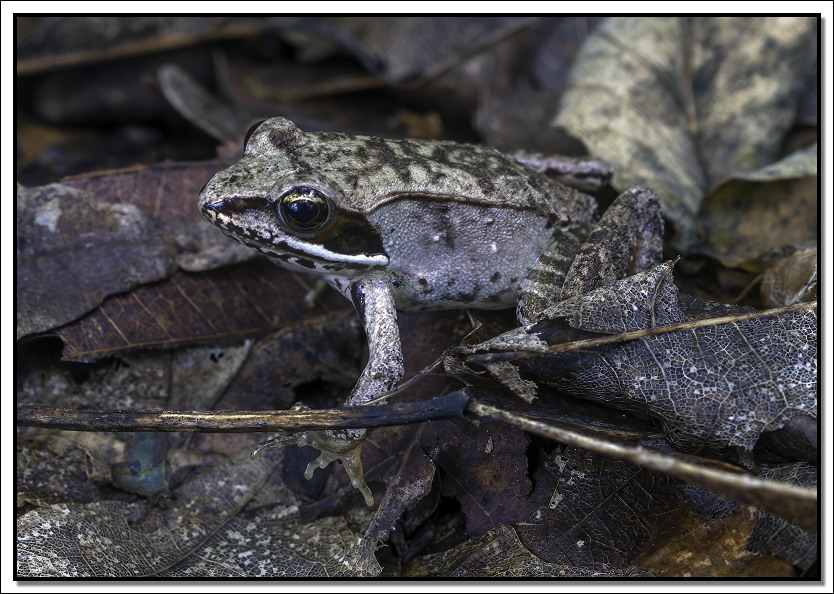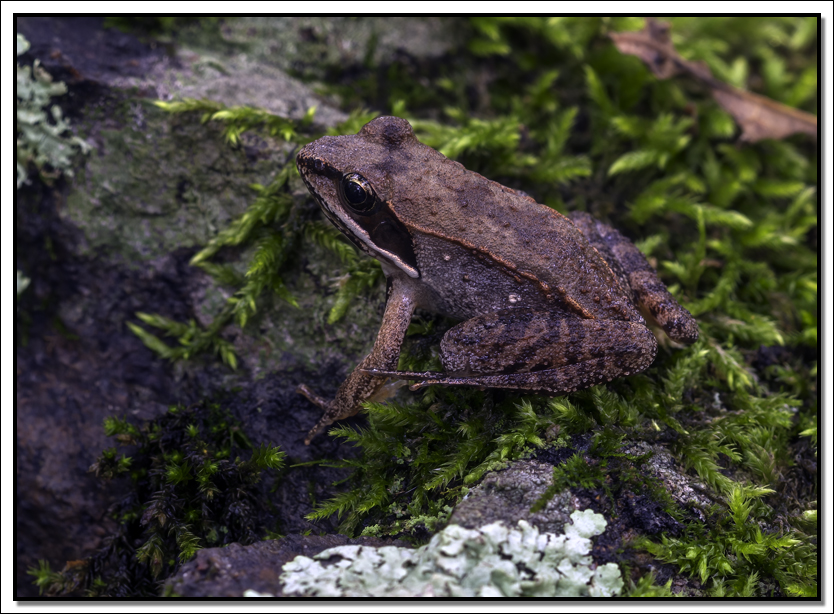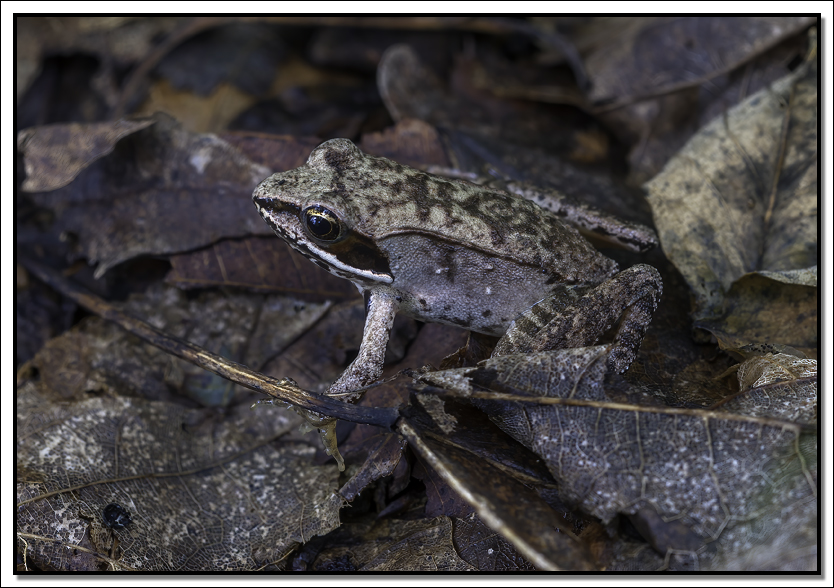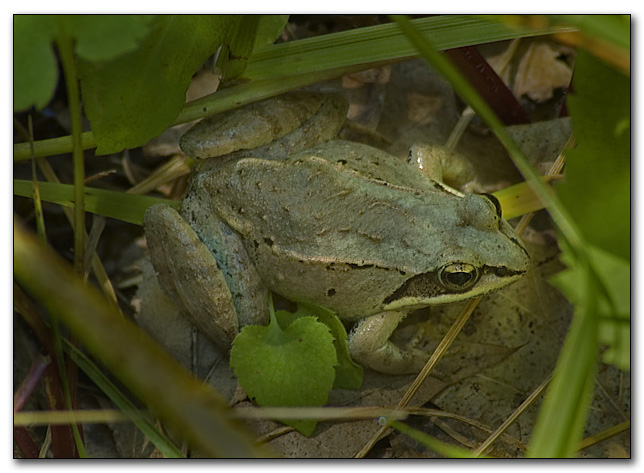Wood Frogs
Wood Frogs (Lithobates sylvaticus )
The Wood Frog is the most widely distributed amphibian in Canada and is found in every province and territory. It is also found in the eastern and north-central United States. They are the only frog that lives north of the arctic circle.
Although found in tundra to the north and occasionally in grasslands in the west, the Wood Frog is most commonly associated with moist woodlands and vernal woodland pools. Wood Frogs are freeze tolerant and hibernate under logs or leaf litter on the forest floor. Wood Frogs can change colour rapidly from very dark to very light. They will darken when cold in order to absorb more heat.

Wood Frogs are the earliest breeders in most of their range, often beginning to call when there is still ice on the ponds in the spring. The mating is season short, lasting just one or two weeks. The eggs are attached to submerged vegetation. Most of the egg masses in a population will be laid within a few days and clustered together so their combined dark colouration warms them and speeds hatching. Because they use vernal pools that will dry up in the heat of the summer. The tadpoles transform quickly and are froglets after 44-85 days.

Wood Frogs usually hibernate on land beneath loose soil, leaf litter or decaying logs. They survive periods of freezing temperatures by producing large amounts of glucose which is a natural antifreeze causing ice to form in the extracellular spaces rather than within the body cells.

